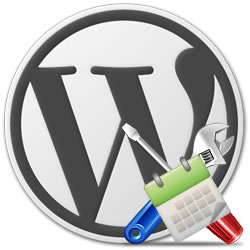When it comes to DIY WordPress, it can seem like an overwhelming project, but those who are up to the challenge and enjoy DIY WordPress will have an easier time with WordPress. Keep reading to learn more about DIY WordPress themes, features, widgets and blogging.
Do-It-Yourself WordPress can be intimidating, but it is also a great way to save money on the costs of hiring someone to set up your WordPress site and blog. You also get full creative control with DIY WordPress over your entire blog and website integration. However, there are many pros and cons to DIY WordPress. In this article, we’ll review some of the basics that must be covered before anyone should trying to DIY WordPress as well as useful hints and tools to help you along your way.
What you need to know before DIY WordPress:
When it comes to DIY WordPress, it is important to have a good understanding of certain aspects of web development and programming. Understanding PHP and MySQL are important in helping you understand how to install WordPress and integrate themes, widgets, plugins and other WordPress features. It is also a good idea to know how to integrate your blog easily with your website. To many, this might be too much work, but for others it may be a welcome challenge. Take advantage of some of the best DIY WordPress tools on the web to get a basic understanding of how a WordPress blog works and how you can learn the programming tools to help you build your website and blog.
DIY WordPress tools:
Some of the best DIY WordPress available include video tutorials, step-by-step blogs and other articles. To become affluent in DIY WordPress design is is best to have a basic understanding of how the programming platform works. This will not only help you with WordPress installation but the overall set up and design. If you are someone who likes having full creative control, this is why DIY WordPress is a good idea because you will have the direct say in exactly how you plan to program your website and blog. For the learner who is a bit more hands on and needs clearer and more direct instruction, video blogs and tutorials describing how to DIY WordPress and some of the other basics of programming and blogging is a great resource. Read all you can how to DIY WordPress before you begin. Be sure you have a comprehensive understanding of how DIY WordPress should operate or you will encounter endless problems and issues with your setup process.
Pros and cons of DIY WordPress:
There are many pros and cons of trying to DIY WordPress. Out of the top pros to DIY WordPress, it will save you money. There are already the basic costs of paying for a domain name associated with WordPress, but this will save you money, time and energy on setting up a blog with WordPress. Many simply do not have the time to spend learning how to DIY WordPress, however, which is why it can be considered one of cons. Many feel that spending the money to hire a profession to DIY WordPress is worth the cost. DIY will also give you complete and total control over the look and operation of your WordPress blog and website. However, with the assistance of having a professional web designer or programmer, you can get advice and expert information on how to make the best website possible using WordPress. Pros who know how to set up WordPress also can build and design you a custom theme for your web space verses learning how to DIY WordPress themes.
Becoming a DIY WordPress professional:
If you are interested in learning DIY WordPress tips, programming, feature information and more in order to learn how to become a professional in designing web pages using WordPress, learning the most you can about DIY WordPress is a great place to start.
Overall, the choice to DIY WordPress can be a difficult one to make. However, it is best to choose the option that will work best for you individually, possible business needs, cost and other factors all play a roll. Consulting a professional prior to beginning your DIY WordPress project might be a good place to start to determine if you want to hire someone to do the WordPress setup and design for your, or if you still want to attempt to DIY WordPress.
